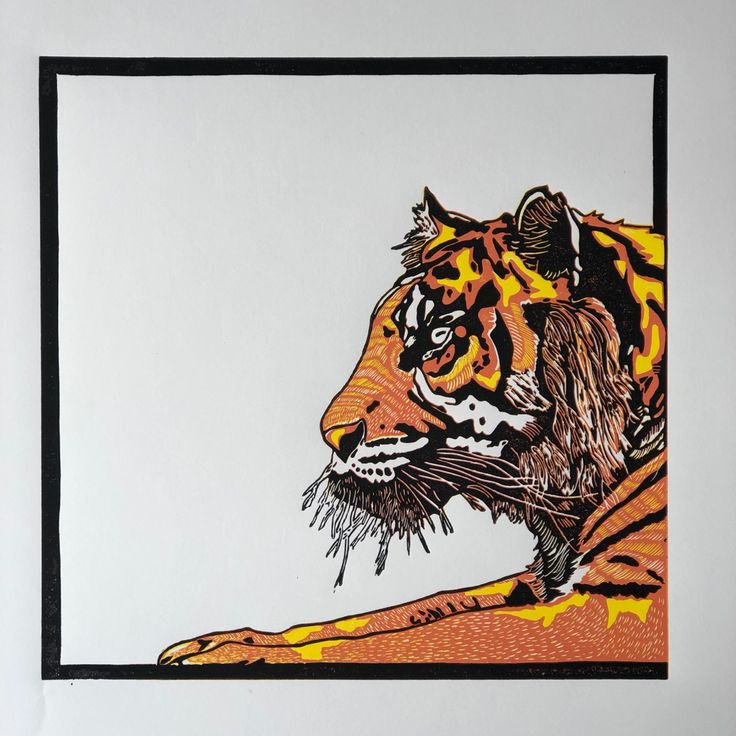
What is Reduction Printmaking? Complete Process Guide.
The reduction printmaking process is a fascinating and intricate printmaking technique that involves creating a multi-colored print from a single block or plate. Unlike traditional printmaking methods where a separate block is used for each color, reduction printmaking requires the artist to progressively carve away and print different layers of color from the same block.
The printing technique requires careful planning, precise carving, and skilled registration (aligning different layers accurately).
It’s a challenging yet rewarding process that demands both artistic creativity and technical expertise. The final prints often showcase a beautiful blend of colors and textures, making reduction printmaking a distinctive and captivating art form.
A reduction printmaking includes several colors. The artist carves away or “reduces” portions of a printing block, printing at intervals, one color at a time. Colors are usually printed from lightest to darkest since dark colors cover lighter color better than the reverse. Relief processes, by contrast, print from raised areas on the printing plate. Wood and linoleum are ideal for relief printing, linoleum being the more user-friendly option. The reduction process is appropriate for relief, but not intaglio printmaking.

History of Reduction Prints
The technique has a rich history that dates back centuries, evolving as artists experimented with various techniques and materials. Here’s a brief overview of the history of reduction printmaking.
Early Roots
Reduction in printmaking can be traced back to traditional woodblock printing practices in Asia, particularly in China and Japan. Early woodblock prints often involved using a single block for multiple colors, but the reduction technique as we know it today was not fully developed.
20th Century Innovations
The reduction print technique as a distinct and intentional process gained prominence in the early 20th century. Artists like Pablo Picasso and Edvard Munch experimented with reduction methods, exploring the expressive possibilities of layering colors on a single block.
Emergence as a Formal Technique
The technique emerged as a formal and recognized technique in the mid-20th century. Artists like Picasso, Stanley William Hayter, and Lynd Ward contributed to its development by pushing the boundaries of traditional printmaking.
Notable Artists
One of the pioneers of reduction printmaking was Swiss artist Félix Vallotton, who explored the technique in the early 20th century. However, it was in the mid-20th century that artists like Pablo Picasso and Picasso’s printmaker Roger Lacourière popularized and refined the method.
Contemporary Practices
Reduction linocut printmaking continues to be a popular and innovative technique in contemporary art. Artists around the world have embraced the method, pushing its boundaries and experimenting with new materials and approaches.
Reduction gained recognition through exhibitions and showcases dedicated to the technique. Galleries and institutions have featured the works of artists who have mastered this intricate process.
Today, it is celebrated for its unique challenges and the striking visual effects it can achieve. It stands as a testament to the ongoing evolution of printmaking as an art form, combining traditional roots with modern experimentation.
Reduction Lino Print Step-by-Step
The color reduction linocut printing process involves creating a multi-colored print from a single block or plate. Here’s a brief overview of the steps involved:
Design and Carving
The very first step begins by designing the image and transferring it onto a block, often made of linoleum or wood. Using carving tools, the artist carves away the areas that will remain white or the lightest color in the final print. This initial carving defines the first layer of the print.
First Printing
The first color is applied to the block, and the artist prints it onto paper or another surface. This initial layer or the first color is usually the lightest color in the final composition.
Carving for the Second Layer
After the first print has dried, the artist carves away more surface from the same block to expose the areas that will remain the first color. This reduces the printing surface and adds more colors.

Second Printing
The block is again inked with the second color and slightly dark color compared to the first color, then the second print is pulled. This layer interacts with the first layer, creating new colors and shades.
Repeating the Process
The artist repeats the cycle of carving and printing for each successive color layer. With each step, the print becomes more and more complex, and the remaining uncarved areas on the block become a combination of all the previous layers.
Final Layer
The last layer is typically the darkest color tone of all the colors, and the artist carefully carves the final details before applying the ink for the last time.
Final Print
The final reduction print of the reduction printing process is a unique piece with a rich color palette, intricate details, and a sense of depth created by layering different tones and colors. Reduction printmaking involves a variety of techniques that artists use to create multi-colored prints from a single block or plate.
Once the process is complete, artists print a limited edition of the final image. Edition printing involves producing a set number of identical prints, each signed and numbered by the artist.
These reduction printmaking techniques require a combination of artistic intuition, technical skill, and careful planning to achieve the desired visual impact in the final print.